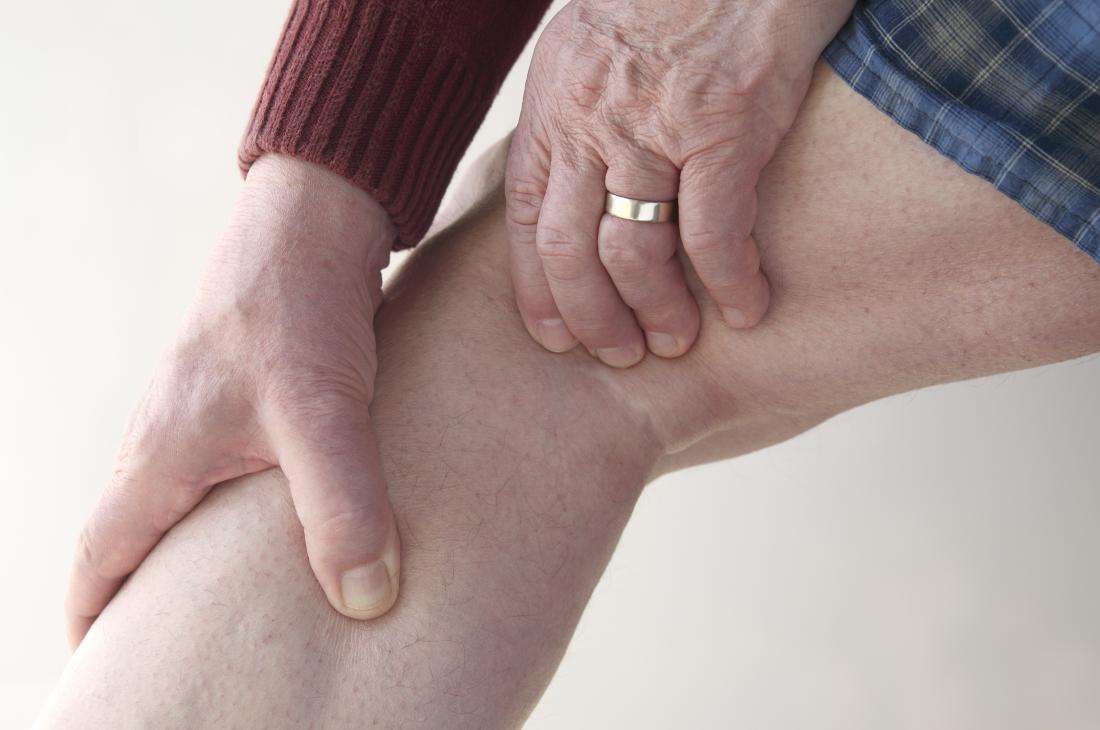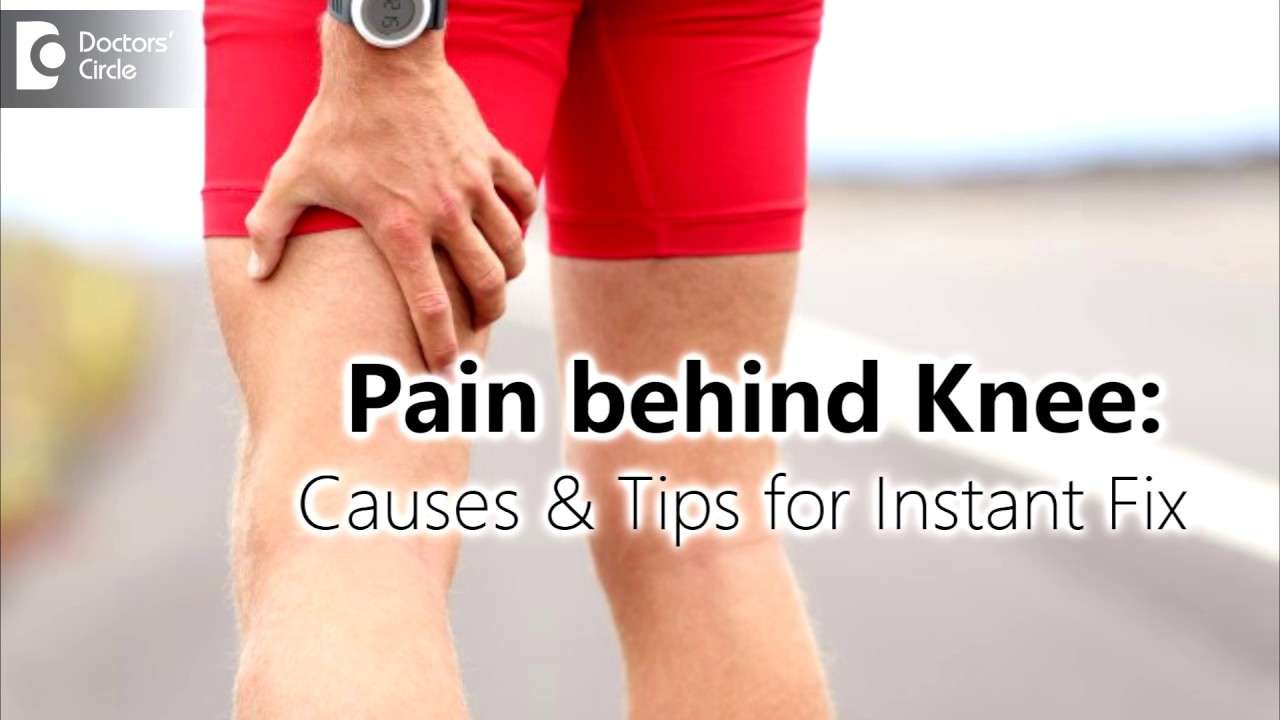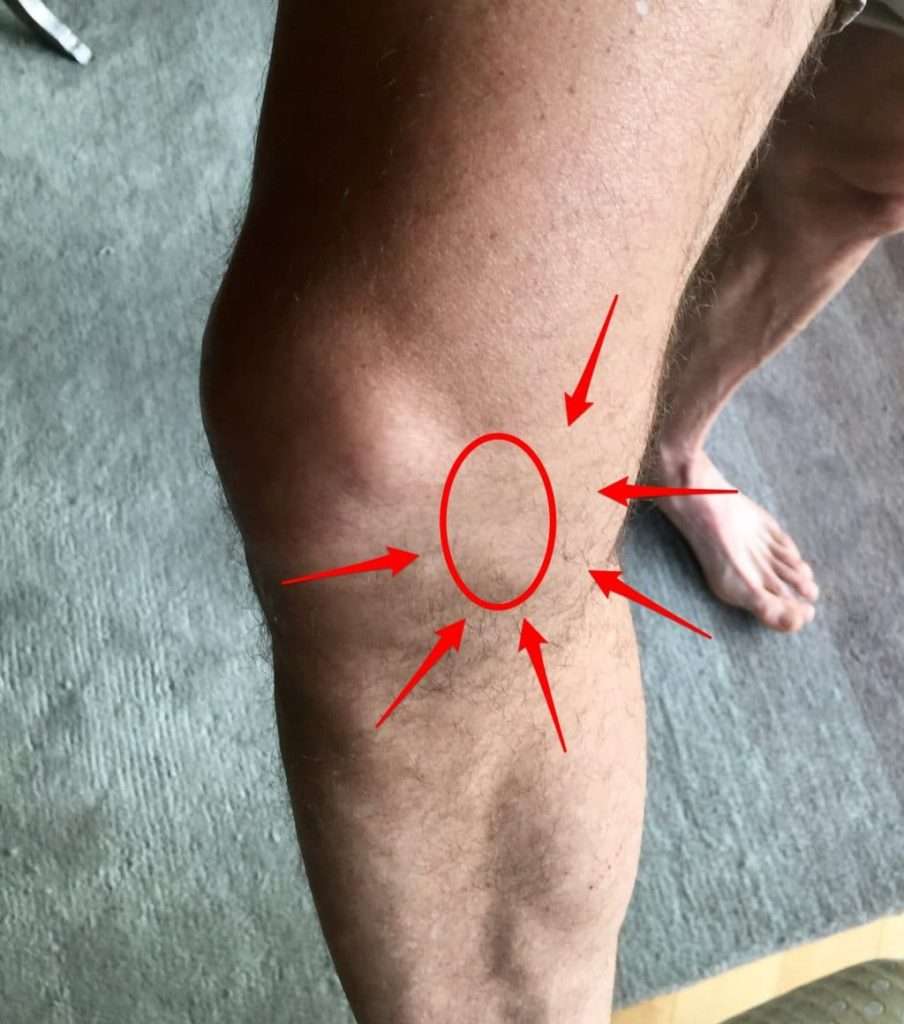Injury/trauma And Tearing As A Cause Of Sharp Stabbing Pain In The Knee That Comes And Goes
A knee injury might be a penetrating cause of burning knee pain. Blunt force trauma to the knee joint can have a grave impact on knee cartilage, and knee bones leaving behind damaged cartilage.
Cartilage Tear
A torn piece of cartilage can also be the source of burning knee pain. Trauma or sports injury can be the possible causes of cartilage damage and consequent causes of knee pain.
Ligament Tear
Ligament tears are a common cause of pain in the body. A torn ligament or a torn meniscus can seriously affect your day-to-day activities. A lateral collateral ligament tear or a lateral meniscus tear can induce pain in the side of the knee.
Patellar Tendonitis And Tear
Patellar tendonitis is inflammation of the patellar tendon. That’s a large tendon connecting your kneecap to the top of your tibia.
Patellar tendonitis is most common in athletes who do a lot of running and jumping. It’s often described as a constant dull pain that becomes sharp when you’re active.
In some cases, a weak patellar tendon can tear. A patellar tendon tear causes:
- Severe pain
- Swelling over the knee
- A tearing or popping sensation
If it’s a bad tear, you might notice an indentation at the bottom of your kneecap. The knee may give out when you walk.
Sharp Knee Pain When Squatting
If your knee pain gets worse when bending during squatting, it is likely a problem within the knee joint itself, such as arthritis or a cartilage tear.
It also needs to be noted that weakness in the hips or ankles can also cause your sharp knee pain from arthritis to get worse.
Thats why its important to look at the whole lower body and how it is functioning when you are bending your knee.
TIPS TO AVOID PAIN: when we squat well, we live well! Fix these common mistakes made during squatting to address the hip, ankles, and knees to reduce sharp knee pain.
Don’t Miss: What Is Gout In Your Knee
Ligament Sprain Or Tear
Knee ligaments
Ligaments are soft tissue structures that help to stabilize the joint. A complete tear of any of the ligaments can cause stability issues along with pain and significant swelling. Partial tears of the ligament can cause sharp pain with movement along with some swelling.
Listed above are only some of the problems that may arise at the knee joint. It is important to be evaluated properly if you are having sharp knee pain. Many of these conditions can be managed conservatively and respond well to physical therapy. Stretching, strengthening and manual therapy can aid in recovery.
JOI is an expert with sharp knee pain. If you suspect that you may have one of these injuries, you should consider seeing a specialist. Be smart about your health. Get assessed, dont guess!
To learn more about a swollen knee, please go to: what does it mean if my knee swollen?
Revolutionary Medical Treatments At The Centeno

Knee nerve pain can be debilitating and require a multitude of medications, surgical procedures, and high-dose corticosteroids like cortisone that can lead to other problems. The board-certified physicians at Centeno-Schultz Clinic have revolutionary treatments validated in peer-reviewed literature to improve the function of the nerve and decrease nerve pain .
Using your own blood, platelet-rich plasma, the board-certified physicians at the Centeno-Schultz Clinic are able to inject and hydrodissect around all areas of nerve impingement, leading to your pain. This can include the lumbar nerve roots with an x-ray guided platelet epidural, the SI joint, the sciatic nerve in the pelvis, the sciatic nerve in the thigh, the tibial nerve, or the common peroneal nerve behind the knee. Hydrodissection is an ultrasound-guided injection with extremely small needles to create space around the peripheral nerves in the leg from the tight fascia, muscles, bones, or ligaments that are compressing and irritating the nerve. In addition, the platelets from your own blood improve the function of the nerve.
Recommended Reading: Can Sciatica Pain Affect The Knee
Osteoarthritis Can Cause Sharp Pains In Knee
Osteoarthritis is a condition where the cartilage that lines our bone becomes worn or damaged. This can cause significant pain in the joint. The condition can cause stiffness about the joint as well as occasional sharp pain with walking, stair climbing, and standing up from a seated position. This type of issue typically occurs over a period of time.
What To Expect At Your Office Visit
Your provider will perform a physical exam, and look at your knees, hips, legs, and other joints.
Your provider may do the following tests:
- MRI of the knee if a ligament or meniscus tear could be the cause
- CT scan of the knee
- Joint fluid culture
Your provider may inject a steroid into your knee to reduce pain and inflammation.
You may need to learn stretching and strengthening exercises. You also may need to see a podiatrist to be fitted for orthotics.
In some cases, you may need surgery.
Read Also: What Is The Best Knee Pillow
Possible Causes Of Pain
Quadriceps tendonitis this is caused by the irritation, strain or injury to the quadriceps tendon.
Patellofemoral Arthritis
This affects the underside of the kneecap and the trochlear groove in the femur in which it moves. When the articular cartilage covering the surfaces of the bone wears away and becomes inflamed the bones come into contact with each other resulting in pain.
Plica Syndrome
A plica is the fold in the thin synovial membrane that lines the knee joint. There were four of these folds in the knee joint originally, but they often become absorbed during foetal development. About 50% of the population is thought to have the remains of the embryonic plicae. When a plica becomes inflamed, perhaps because of repetitive knee movement, trauma or twisting, it causes pain and weakness in the knee.
Lateral patellar facet overload syndrome
This refers to dull aching pain underneath, around the sides or below kneecap. It is caused by increased pressure on the lateral facet of the patella. The reason for this is improper tracking, poor alignment or dislocation of the kneecap. The condition is often apparent during repetitive exercise such as climbing stairs.
Synovitis
Sharp Knee Pain Symptoms
The knee is the largest and most stressed joint in the human body. It is used in every movement walking, jumping, running, even standing and as a result, the knee is extremely vulnerable to injury. Most people, regardless of age, experience knee pain at some point in their lives. Older individuals may experience knee pain and discomfort due to multiple age-related conditions, and younger individuals may experience similar symptoms due to sports or other physical activities. However, sharp knee pain symptoms are often a sign of serious knee injury, and you should see a physician immediately.
You May Like: How To Make Your Knee Feel Better
Sharp Knee Pain When Taking The Stairs
There are two directions/causes of this type of sharp knee pain.
When traveling up the stairs, this indicates a problem within the knees tibiofemoral joint. When traveling downstairs, the problem most likely stems from the knee cap.
Both of these are considered mechanical problems within the knee. Either way, the solution actually remains the same!
TIPS TO AVOID PAIN: if your knees arent aligned with the rest of your body, it can aggravate your knees causing the sharp pain with stairs. Start with these 3 simple stretches to realign your knees and relieve discomfort.
Sharp Knee Pain When Sitting Down
Experiencing sharp, shooting knee pain at rest, such as sitting for more than 20-30 minutes, is a common feature of arthritis.
While sitting for brief periods of time can be beneficial to our health and stress recovery, too much can flare-up arthritic pain in your knees.
TIPS TO AVOID PAIN: switch up your routine to get up more often by following these 3 tips to reduce the harmful effects of sitting. From setting a timer for movement to seated chair exercises, these tips are sure to keep your knee pain at bay.
Read Also: Where Is The Bursa In The Knee
Inner Knee Pain Causes
There are a number of causes of inner knee pain, not all of which are as obvious as a direct blow to the knee. Often, what causes inner knee pain is not easy to identify, particularly when the pain has come on gradually.
A meniscus injury, for example, might happen during a sporting event. However, normal overuse of the cartilage can lead to a breakdown of the meniscus, particularly as we age.
Among the most common causes of inner knee pain are:
- Repetitive stress
- Poor technique during everyday activities, sports, or exercise
- Dysfunctional lower body or core mechanics
- Weak leg muscles
- People who are inactive or sedentary
- Weekend warriors
What Is The Treatment For Knee Pain

Treatments for knee pain are as varied as the conditions that can cause the pain.
Medications
Medications might be prescribed to treat an underlying medical condition or for pain relief.
If you are taking over-the-counter anti-inflammatory pain medications regularly for your knee pain, you should see your doctor to be evaluated.
Physical therapy
Sometimes physical therapy sessions to strengthen the muscles around the knee will make it more stable and help guarantee the best mechanical movements. Working with a physical therapist can help avoid injuries or further worsening of an injury.
Injections
Injecting medications directly into your knee might help in certain situations. The two most common injections are corticosteroids and lubricants. Corticosteroid injections can help arthritis and other inflammations of the knee. They usually need to be repeated every few months. Lubricants that are similar to the fluid already in your knee joint can help with movement and pain.
Don’t Miss: How To Get Toned Knees
What Could Cause Sharp Knee Pain When Walking
Sharp pain in the knee is usually a sign that you have a knee injury. The injury may have occurred over a period of time, or it could have occurred from one specific incident. The quick answer is their are several structures in the knee that can lead to sharp pain. These include:
- Tendons
- Cartilage on the Joint Surfaces
- Meniscus
- Bursae
- Knee Cap
Whether you are a competitive athlete, weekend warrior, or someone who frequents the couch you may experience pain in the knee joint at some point during your life. If you want to learn more about the anatomy of the knee, please watch this VIDEO.
Knee Anatomy
Some common injuries of the knee that can cause pain in the knee joint or sharp pain may include:
What Causes Nerve Pain In Your Knee That Is Directly Related To Knee Problems
Nerve injuries in the knee are common after surgery, like total knee replacement, where the outside nerves get stretched. This can lead to weakness in the ankle commonly referred to as foot drop. There are also superficial sensory nerves that run on the inside and outside of the knee that can be irritated during pressure, certain clothing, knee braces, prior surgery or incisions, or very loose knees, like knock-kneed or bow-legged knees that lead to stretching of the nerves.
Don’t Miss: What To Do When You Hurt Your Knee
Sharp Knee Pain Causes By Activity
Page Last Updated: 12/06/21
What You Need To Know
- The most common causes of knee pain are related to aging, injury or repeated stress on the knee.
- Common knee problems include sprained or strained ligaments, cartilage tears, tendonitis and arthritis.
- Diagnosing a knee injury or problem includes a medical examination and usually the use of a diagnostic procedure such as an x-ray, MRI, CT scan or arthroscopy.
- Both non-operative and surgical treatment options are available to treat knee pain and problems depending on the type and severity of the condition.
You May Like: Can You Get Mri With Knee Replacement
Will I Need Surgery
If physical therapy doesnt help, you may need a procedure called arthroscopic resection.
Your doctor will insert a small camera called an arthroscope through a small cut in the side of your knee. Theyll use small surgical tools, inserted through another small cut, to remove the plica or adjust its position.
After surgery, your doctor will refer you to a physical therapy program to help you rebuild your knee strength. Youll start with gentle exercise to ease the pain and swelling. Eventually youll move on to more challenging exercises to strengthen your quadriceps, hamstrings, and calf muscles.
Recovering from surgery for plica syndrome depends on several factors, including your overall health and the affected knee. If you had surgery on your right knee, for example, you may need to wait about two weeks before driving. If your left knee was affected, you may fully recover within three to four days.
Keep in mind that you may need to wait several weeks before returning to your regular levels of exercise and physical activity.
Where Is Your Pain
The location of your knee pain can tell you a lot about what the underlying causes are. Pain on the sides of the knee can often be associated with damage to your ligaments. Pain on the surface of the knee could be a sign of a fracture in your patella.
Pain from inside the knee could be caused by anything from arthritis to a wearing down of the pads that protect and cushion the knee.
You May Like: What Does Knee Tendonitis Feel Like
Less Common Causes Of Knee Pain
Less-common causes of significant knee pain include conditions and injuries. Injuries include:
- Dislocated kneecap: Causes are sharp blows to the knee or twisting. Severe pain in the front of the knee plus buckling, slipping, or catching during movement.
- Kneecap fracture: Causes are a direct blow or falling onto the knee. Pain, difficulty straightening the leg, bruising, and swelling can occur. Sometimes there’s visible deformity.
Conditions include:
- Plica syndrome: Irritation of the synovium . Pain is in the middle and front of the knee. Worsens with inactivity or squatting, running, or kneeling. The knee may pop when bent.
- Osgood-Schlatter disease: Strikes after growth spurts in kids between 9 and 14. Pain is in the front of the knee. It improves with rest and worsens with activities like running and jumping.
- Osteochondritis dissecans: In children, lack of blood supply weakens the bone and cartilage. The knee may separate from the underlying bone. Causes pain with activity.
- Knee joint infection: Causes significant pain, swelling, warmth, painful movements, and fever. It may result from a bacterial infection in the bloodstream.
- Bone tumor: Very rarely the source of knee pain. Symptoms include fever, unintentional weight loss, and pain that’s worse at night.
Why Do I Have Pain In The Front Of The Knee

The most common cause of anterior knee pain is often felt to come from a muscular imbalance or a particular pattern of weakness. This will be the case for the majority of you reading this. At least thats what we think is the most common cause. We have come a long way in evaluating runners and other people who present with pain in the front of their knees. They often show the same findings when we use high-speed cameras to videotape them while running or walking. Now, this might be a chicken vs. the egg thing. Right? Which came first, the weakness pattern or the pain? We like to think it was the weakness that came first. We are still working on proving that.
If you are a runner or cyclist, etc then your training may influence your anterior knee pain. If you train too hard, too fast, and too often then you are at a higher risk of developing anterior knee pain. Most amateur runners run too fast on their easy days and too slow on their hard days. Proper base building, for strength, endurance and conditioning our joints to adapt to distance is of paramount importance. Zone 2 running programs are extremely important even for elite runners. Try to keep your training at a continuously progressive pace. You should be slowly increasing the load, distance, or speed over time. Try not to increase your load, eg. distance, speed, etc more than 10% per week. Most runners overuse injuries are training errors.
Don’t Miss: What Helps With Arthritis Pain In Knee